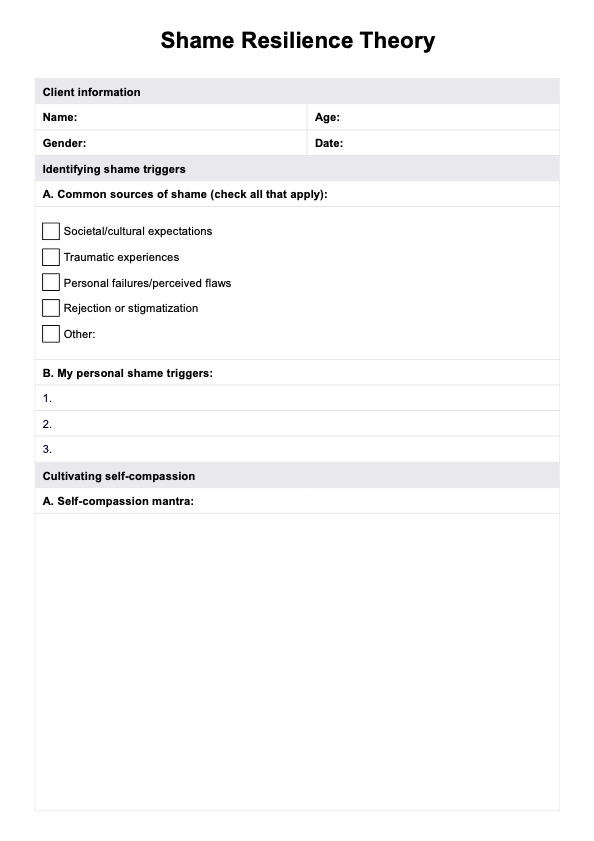Shame can significantly impact both physical and mental health by discouraging individuals from seeking treatment and hindering the disclosure of crucial health information. This can create a cycle where shame exacerbates health issues, which, in turn, can feed back into the experience of shame itself.

Shame Resilience Theory Template
Use our free template to help your clients with a more goal-directed approach to building shame resilience.
Shame Resilience Theory Template Template
Commonly asked questions
According to Brené Brown's Shame Resilience Theory, the key components are recognizing shame triggers, practicing critical awareness, reaching out to supportive others, and speaking about feelings of shame.
Identifying personal shame triggers allows individuals to become more aware of situations or experiences that elicit shame. Based on the shame resilience theory, awareness enables them to respond with self-compassion and appropriate coping strategies rather than unhealthy patterns like avoidance or self-criticism.
EHR and practice management software
Get started for free
*No credit card required
Free
$0/usd
Unlimited clients
Telehealth
1GB of storage
Client portal text
Automated billing and online payments











